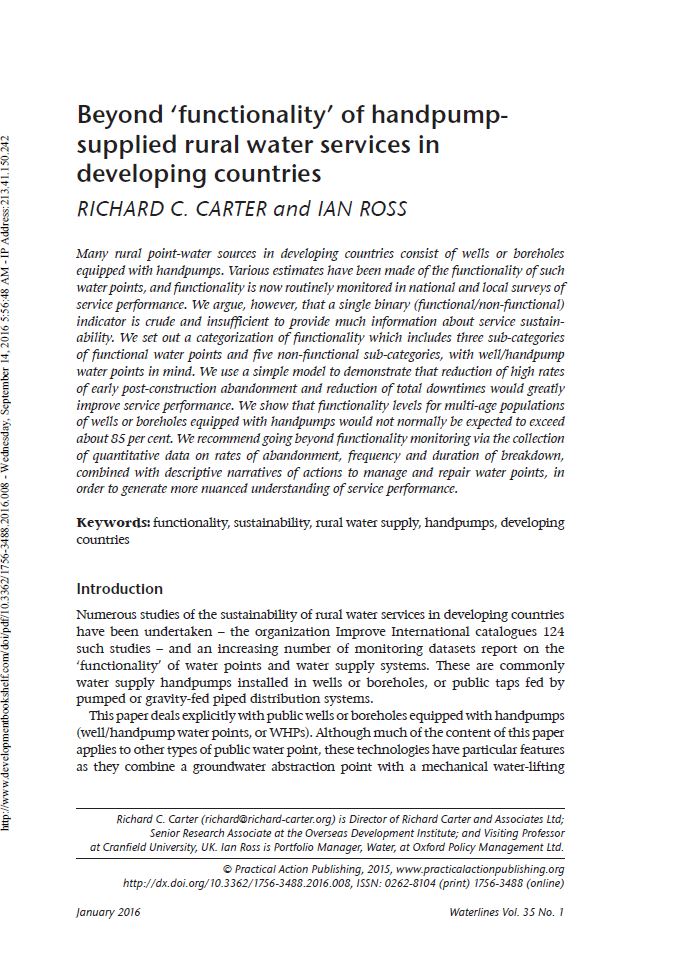Beyond 'functionality' of handpump-supplied rural water services in developing countries
 |
article coll. Waterlines ; en 35 volumes Jan 2016 ; 17 pages
Ed. Practical Action - Rugby ; Issn: 1756-3488
Téléchargeable sous format: PdF
Téléchargeable chez l'éditeur
Abstract:
Many rural point-water sources in developing countries consist of wells or boreholes equipped with handpumps. Various estimates have been made of the functionality of such water points, and functionality is now routinely monitored in national and local surveys of service performance. We argue, however, that a single binary (functional/non-functional) indicator is crude and insufficient to provide much information about service sustainability. We set out a categorization of functionality which includes three sub-categories of functional water points and five non-functional sub-categories, with well/handpump water points in mind. We use a simple model to demonstrate that reduction of high rates of early post-construction abandonment and reduction of total downtimes would greatly improve service performance. We show that functionality levels for multi-age populations of wells or boreholes equipped with handpumps would not normally be expected to exceed about 85 per cent. We recommend going beyond functionality monitoring via the collection of quantitative data on rates of abandonment, frequency and duration of breakdown, combined with descriptive narratives of actions to manage and repair water points, in order to generate more nuanced understanding of service performance.
Mots clefs: |
alimentation en eau saine (CI) (DT) (OP) (ope) , maintenance, entretien (CI) (DT) (OP) (ope) , pompe (CI) (DT) (OP) (ope) |
Editeur/Diffuseur: |
|
Practical Action - Rugby - Royaume Uni |
En cas de lien brisé, nous le mentionner à communication@pseau.org